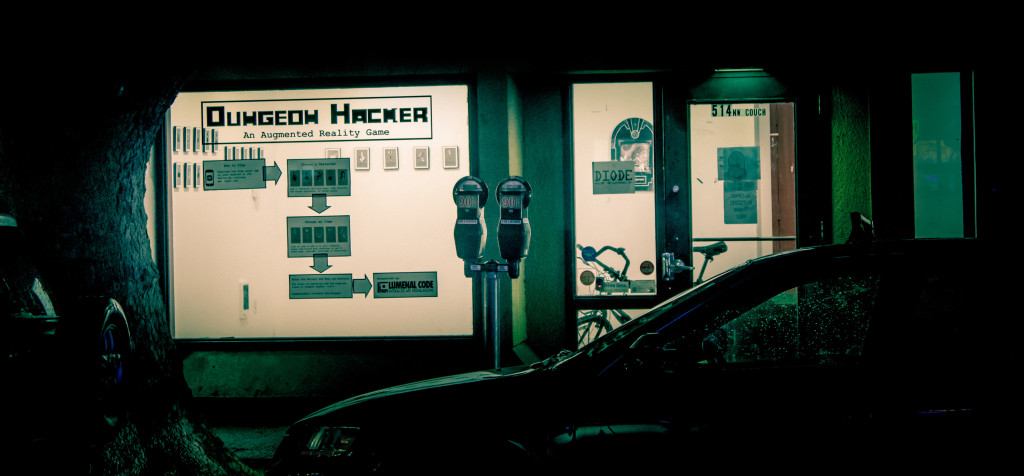

 We are surrounded by things we can’t see. All around us, information is flowing in invisible fields.
We are surrounded by things we can’t see. All around us, information is flowing in invisible fields.
Augmented Reality involves calculating your position and the position of objects around you, to access and display this hidden information.
One approach to Augmented Reality uses the GPS and accelerometer on a smartphone or tablet to determine your position, and the camera to detect the position of objects around you. Then the display of the phone shows information on top of the camera’s view.
At Lumenal Code, we create murals and sculptural installations that use Augmented Reality to bring interactive digital content into the artwork.

When you scan the artwork with Layar, it comes to life with multi-layered animations, like the one below:
 The animations are not just limited to touch interactions. By leveraging the power of data and the internet we can create complex games, turning an illustration show at an art gallery into a game you play in augmented reality while viewing the artwork.
The animations are not just limited to touch interactions. By leveraging the power of data and the internet we can create complex games, turning an illustration show at an art gallery into a game you play in augmented reality while viewing the artwork.

In Dungeon Hacker, you choose from one of twelve characters by scanning the illustration with Layar.

After selecting a character, you’ll have one crypto-credit to spend. This allows you to select one item.

Andy Lunday and Ryan Johnson each created a set of items, and each item gives you either charisma, knowledge or creativity.

Each monster has unique strengths and weaknesses, so you’ll need the right combination of character and items to defeat them.

Once you defeat all the monsters, you are ready to face The Gibson! If you defeat the gibson, you win the game!
When you think about how Augmented Reality can integrate with the Internet of Things, the possibilities start to get really exciting. Instead of the experience being isolated to the screens of mobile devices, it can become a part of the world around us. Already we see this with projection mapping, where the experience becomes seamless and almost tangible.

Projection Mapping is a form of Augmented Reality
Augmented Reality can become a part of the world around us or even a controller, interacting with lighting and other smart devices.



